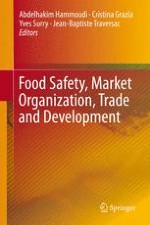2015 | OriginalPaper | Buchkapitel
13. Conclusion
verfasst von : Abdelhakim Hammoudi, Cristina Grazia, Yves Surry, Jean Baptiste Traversac
Erschienen in: Food Safety, Market Organization, Trade and Development
Aktivieren Sie unsere intelligente Suche, um passende Fachinhalte oder Patente zu finden.
Wählen Sie Textabschnitte aus um mit Künstlicher Intelligenz passenden Patente zu finden. powered by
Markieren Sie Textabschnitte, um KI-gestützt weitere passende Inhalte zu finden. powered by
